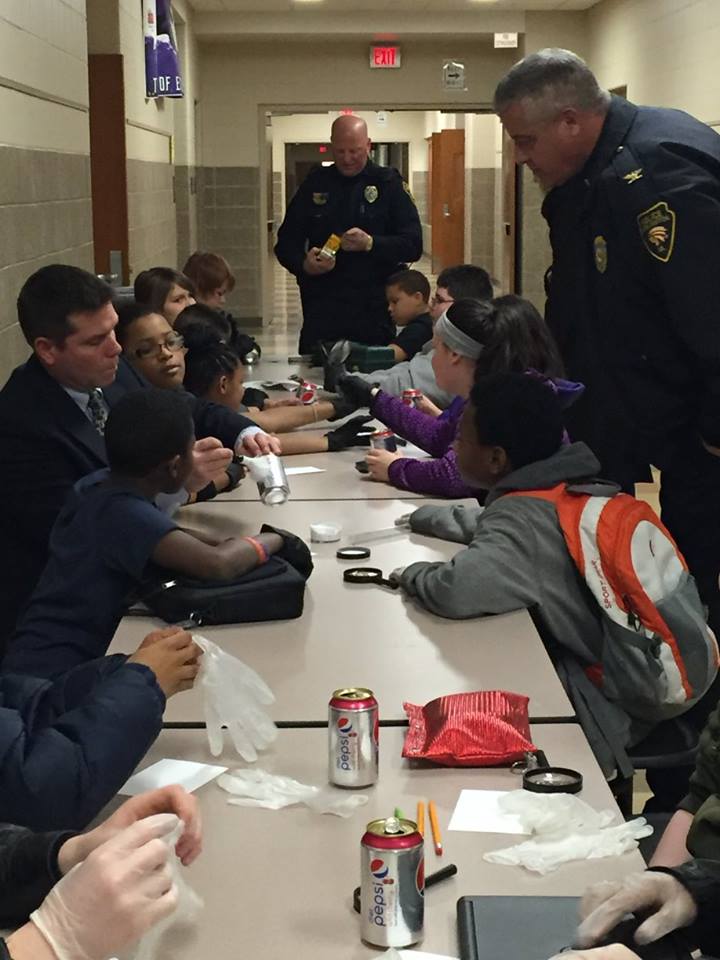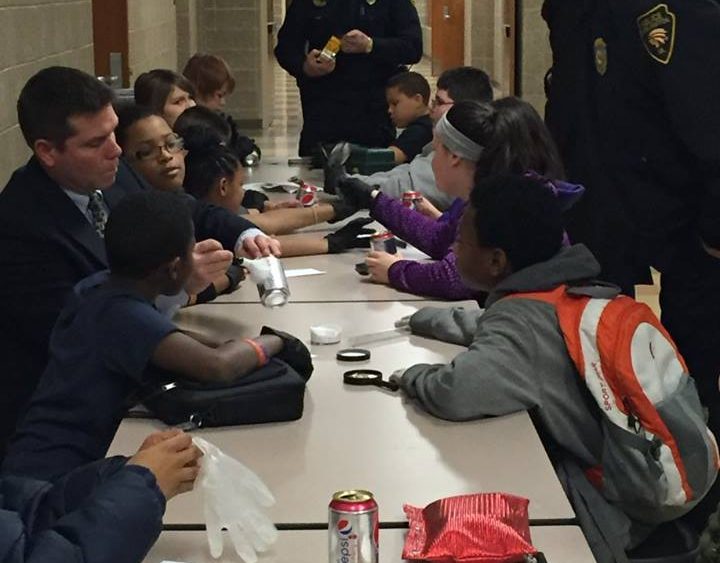This post is presented as part of the Afterschool Spotlight blog series, which tells the stories of the parents, participants and providers of afterschool programs. This post is also an installment in our new Afterschool & Law Enforcement series, which explores the ways afterschool programs are partnering with police to keep communities safe and growing strong. Our latest installment of the Afterschool & Law Enforcement series focused on a Lights On Afterschool event that fostered a new connection between the NYPD and a New York City afterschool program.

A police officer out of his uniform, running a flag football club in sweatpants and a t-shirt. Detectives mentoring students in a Crime Scene Investigation club. Female police officers talking with girls about what it’s like to be a woman in law enforcement. These are just a few glimpses into the ongoing activities spurred by the collaboration between PIECES, an afterschool program in rural Iowa, and the Burlington Police Department.
The partnership began in 2013, when PIECES afterschool program director Jackie Swink approached the local police department to support her application for a 21st Century Community Learning Centers (21st CCLC) grant. Around the same time, Major Darren Grimshaw and the Burlington Police Department were having internal conversations about new ways to engage with the community. This confluence of events led to a strong partnership between the two organizations—ever since, officers have been present in the afterschool program, connecting with students and working to build relationships and trust to break down barriers between youth and the police.
Today, PIECES offers programs at two middle schools and an elementary school in rural Burlington, Iowa, serving about 70 students at each site. PIECES offers diverse programming for students, with an emphasis on developing community partnerships—in addition to the police department’s involvement, partners include local hospitals, grocery stores and banks. As Major Grimshaw explained, “It gives all of us an opportunity to sit down with these kids and get to know who they are.”
Major Grimshaw and officers in the department are involved with PIECES in a variety of ways and at varying levels that suit the mutual needs of the officers and the program. The school resource officer, who splits his time between the two middle schools, is a consistent presence with his daily participation. Other officers come and go, either informally stopping by or using shared interests to develop lasting bonds with the students, like the investigators who host a CSI club night to teach students the basics of fingerprinting and crime scene investigation.
Through his involvement with PIECES, Major Grimshaw is learning more about the experiences of children in his community. After catching a student taking ground beef from her cooking class, the officers learned that not all of the students have enough to eat at home.
He accompanied another student on a trip to meet state legislators, before which he learned that the student didn’t own any dress clothes to wear to the meetings—after putting on new clothes provided by the program, the student said, “I’ve never had nice clothes like these, how do I look?” Dressed to impress, that student went to the state capitol, shook hands with legislators and spoke passionately about what his afterschool program means to him.
The experience made a huge impact on Major Grimshaw, who explained that the best thing about the program is that it can provide opportunities to which students wouldn’t normally have access, and involvement by police officers is an effective way for officers to understand the challenges that children in their communities are facing.
The relationship between Major Grimshaw and the student is one that he describes as “one of the more eye-opening experiences that I’ve had,” sharing that the student still comes to find him to talk because of the bond they formed during their trip. It is why he truly believes that “the more we can build relationships … the better off we’ll be. We bonded during that trip, and it made me fully realize at that point that once we break [down] the barriers … we really can communicate and develop those relationships that are positive.”
Following the police department’s lead and inspired by the success of its collaboration with PIECES, other city agencies have been motivated to get involved. The fire department, parks and recreation department, and city government at large have all joined in the effort to make connections with Burlington kids after school.
“The key to our afterschool program is building relationships with youth that are there,” said Major Grimshaw. Today, kids in Burlington might yell at the officers in the street to come over and talk to them about the flag football game they played at PIECES the night before—a big positive shift from the years before this partnership took hold, when relationships between officers and kids playing in the street were less friendly. Whether through playing sports, working on homework, or learning something new, PIECES allows community members and students to connect in a new way.

Comments are closed.